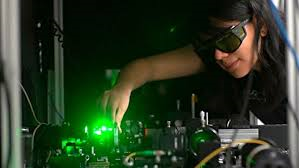
Breaking News
 Blue Origin New Glenn 2 Next Launch and How Many Launches in 2026 and 2027
Blue Origin New Glenn 2 Next Launch and How Many Launches in 2026 and 2027
 Mon War Room LIVE: Trump Vows $2,000 Tariff Dividend Checks For Lower/Middle Class Americans
Mon War Room LIVE: Trump Vows $2,000 Tariff Dividend Checks For Lower/Middle Class Americans
 The View's Ana Navarro explodes as she issues stern warning to America, scolds 'bully' D
The View's Ana Navarro explodes as she issues stern warning to America, scolds 'bully' D
 Donald Trump threatens to sue BBC for $1 BILLION over doctored Panorama speech...
Donald Trump threatens to sue BBC for $1 BILLION over doctored Panorama speech...
Top Tech News
 Goodbye, Cavities? Scientists Just Found a Way to Regrow Tooth Enamel
Goodbye, Cavities? Scientists Just Found a Way to Regrow Tooth Enamel
 Scientists Say They've Figured Out How to Transcribe Your Thoughts From an MRI Scan
Scientists Say They've Figured Out How to Transcribe Your Thoughts From an MRI Scan
 SanDisk stuffed 1 TB of storage into the smallest Type-C thumb drive ever
SanDisk stuffed 1 TB of storage into the smallest Type-C thumb drive ever
 Calling Dr. Grok. Can AI Do Better than Your Primary Physician?
Calling Dr. Grok. Can AI Do Better than Your Primary Physician?
 HUGE 32kWh LiFePO4 DIY Battery w/ 628Ah Cells! 90 Minute Build
HUGE 32kWh LiFePO4 DIY Battery w/ 628Ah Cells! 90 Minute Build
 What Has Bitcoin Become 17 Years After Satoshi Nakamoto Published The Whitepaper?
What Has Bitcoin Become 17 Years After Satoshi Nakamoto Published The Whitepaper?
 Japan just injected artificial blood into a human. No blood type needed. No refrigeration.
Japan just injected artificial blood into a human. No blood type needed. No refrigeration.
 The 6 Best LLM Tools To Run Models Locally
The 6 Best LLM Tools To Run Models Locally
 Testing My First Sodium-Ion Solar Battery
Testing My First Sodium-Ion Solar Battery
 A man once paralyzed from the waist down now stands on his own, not with machines or wires,...
A man once paralyzed from the waist down now stands on his own, not with machines or wires,...
Thin film nanocrystal from Australia could make thin as glass night vision goggles that ...

Professor Dragomir Neshev from ANU said the new night-vision glasses could replace the cumbersome and bulky night-vision binoculars currently in use.
"The nano crystals are so small they could be fitted as an ultra-thin film to normal eye glasses to enable night vision," said Professor Neshev from the Nonlinear Physics Centre within the ANU Research School of Physics and Engineering.
"This tiny device could have other exciting uses including in anti-counterfeit devices in bank notes, imaging cells for medical applications and holograms."
Co-researcher Dr Mohsen Rahmani said the ANU team's achievement was a big milestone in the field of nanophotonics, which involves the study of behaviour of light and interaction of objects with light at the nano-scale.
"These semi-conductor nano-crystals can transfer the highest intensity of light and engineer complex light beams that could be used with a laser to project a holographic image in modern displays," said Dr Rahmani, a recipient of the Australian Research Council (ARC) Discovery Early Career Researcher Award based at the ANU Research School of Physics and Engineering.



